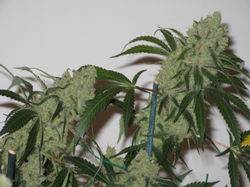hydroflower
Member
You have a habit of editing your posts after someone has replied, people have a memory you know.

Miko said:And we can now safely conclude that seawater decrease yields.
Miko said:And we can now safely conclude that seawater decrease yields.


Mr Celsius said:The thing that actually really interests me about this is, the possibilities of salt water fish farming and aquaponics...
So is this stuff basically sea water or is it sea water that has been evaporated and then refined by some manner?
osirica420 said:i am using a mix of sea solids -
Sea Crop - Sea-Crop.com
Sea 90 - SeaAgri.com
Thalassa Mix - http://www.shopgrowgreens.com/category.sc?categoryId=6
osirica420 said:I am using unrefined seasalt from the deep ocean, i have the solid salt and concentrate.. its in its natural pure state..
http://www.sea-crop.com/history.htmlThe Challenge: To extract from seawater the bioactive principles without the salt.
Proceeding from the work of Dr. Murray and guided by a test for bioactivity recommended to us by Dr. Philip Callahan we entered onto a path of research that was to culminate with the creation of the product SEA-CROP. Our first goal was to extract from seawater most of the bioactive principles while leaving behind most of the water and sodium chloride. In our opinion this would be the only way a seawater extract would become economical and have a broad-based agricultural application.
We were successful in making a bioactive seawater extract loaded with trace minerals and it performed well compared to Dr. Murray's system but instead of 1,500 lbs per acre only one to three gallons per acre of concentrate were needed.
The Result:
As a result we have been able to locate optimum sources of seawater and identify a superior method of extraction that now allows us to make an extract twice as strong as before while holding prices the same. It is our profound hope that we have helped to make possible the more wide spread use of this blessing of nature for both soil and personal health.
http://www.americanbluegreen.com/html/thalassa_mix.htmlPure sea water
Original Himalayan Crystal Salt™
Humus
Silica
Yarrow
Chamomile
Stinging Nettle
White Oak Bark
Dandelion
Valerian
Equisetum arvense (Meadow Horsetail)
Clay
osirica420 said:I am using unrefined seasalt from the deep ocean, i have the solid salt and concentrate.. its in its natural pure state..
I guess that's almost the prove seawater makes more potent bud, as promissed. But I am awayting for the smoke report just to be 100% sure.Sea-Solids definitely grow some dank looking buds, looks very potent...
Miko said:That's the info osirica420 provided on the first page of this discussion.
Then,
Oh, come on now, let's see a little closer:
http://www.sea-crop.com/history.html
Let's see what's in Thalassa mix:
http://www.americanbluegreen.com/html/thalassa_mix.html
And then, you got SeaAgri Sea-90, which claimed to be untreated. Their Ocean Trace thouh is a refined product with at least a part of sodium removed. http://www.aglife.net/oceantrace.html Food for thought.
Let's see now, the plants are fed with a mix of these three poducts (note we have very little info on them in any case) PLUS commercial fertilizer.
Apparenty I am truly not clever enough to comprehend osirica420's great discoveries and deep as sea research.

Me too as the last pics posted look like they have a serious stretch problem but may be the enviro or strain. If cannabis was meant to be grown in salt water the ocean would be covered with em. Not saying there is not some benefit here with the products but cannabis has evolved over millions of years to grow in soil without any influence from the sea. Nutrients are deposited in layers which canna roots have adapted to find and make best use of. Water comes from the sky, runoff or plants grow in areas where the water table is such that the roots can find enough water to thrive.I'm glad that you're going to do a side by side with a control
